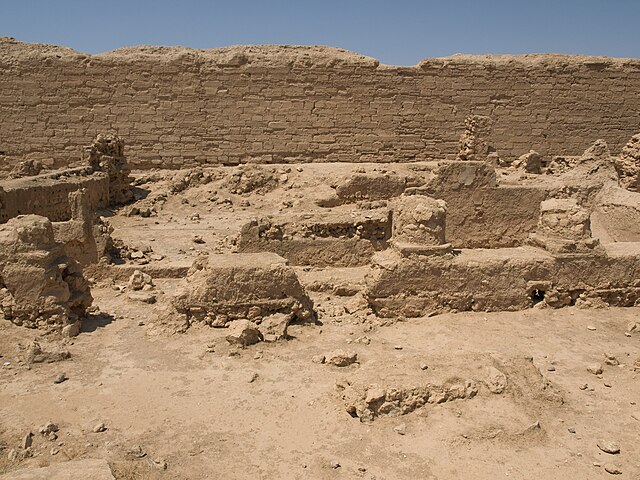One of the most important Jewish holidays in the Jewish calendar that carries historical significance is Purim. The discovery of a synagogue buried since 256 AD in the 20th century is a fascinating example of Purim’s impact. The excavation of this synagogue provided a wealth of information on the Jewish perspective of themselves and their surroundings at the time. Our discussion today will revolve around the renowned synagogue situated in the city of Dura Europos on the banks of the Euphrates River in eastern Syria.
If you’re interested in expanding your knowledge of our shared history, join us on a riverboat cruise, with Kosher River Cruises during your glatt kosher holidays. Travel in style, experience fine kosher dining and daily services, and get a chance to see and explore fabulous destinations whilst staying in luxury onboard. Make this a Jewish vacation over and above the norm.

Courtyard, west portico and large hall of the synagogue of Doura Europos. | (c) en.wikipedia.org/wiki/Dura-Europos_synagogue
The Buried Settlement
Before this area was buried, it stood tall as a city surrounded by walls. This city was identified to be a kind of borderland territory that separates the Persian Empire from the Roman Empire. There was a time during the 3rd century when the Romans correctly predicted and prepared for a Sassanian advance on the city. Thus, they came up with a plan to try and protect themselves against the Persians. The Roman authorities commanded all residents along the Western wall to abandon their homes and businesses so they could completely cover these locations with sand to make it seem like it wasn’t there. They had this idea in mind thinking that the Persians would attack from the land side in the West instead of from the sea. Unfortunately, the Roman Empire ended up being kicked out of their own city by the Persians and the settlement was left abandoned for several centuries until its discovery in the 20th century and excavation during the 1930s.
Dura-Europos Synagogue
During excavations of the site, a series of well-preserved wall paintings were discovered in the synagogue. The paintings depict various scenes from Jewish scripture, including the story of Moses and the parting of the Red Sea, and the binding of Isaac. The paintings also include images of various Jewish symbols, such as the menorah and the Torah. Numerous scholars have spent their lives closely studying these paintings in hopes of understanding what they mean for the history of Jews in this particular part of the world. The Dura Europos Synagogue wall paintings are significant because they provide a rare glimpse into the artistic and religious practices of ancient Jewish communities. They are also noteworthy for their use of vibrant colors and intricate designs. The paintings are considered some of the earliest surviving examples of Jewish art and have influenced later Jewish artistic traditions.
Wall Paintings
One particular artwork found in the synagogue depicted a scene from the Book of Samuel wherein Samuel was anointing David. It had a kind of Byzantine art style characterized by rigid postures and almond-shaped eyes for the figures illustrated in the painting. There is also an interesting rendition of what could be Aron and Moshe holding his staff over waters as the Egyptians are drawing in them. What’s unusual in this specific artwork is that there is an illustration of hands that look strangely divine at the top of the painting. This is strange because Jews were typically aniconic during this time in history. They were known to be against the representation of any living thing, and especially God. However, some of the paintings in the Dura-Europos Synagogue says otherwise.
Another notable painting on the walls of this synagogue is a depiction of a scene from the Book of Esther. You can see Queen Esther and King Ahasuerus receiving a letter from a messenger, which is an act that holds significance in the book of Purim. Next to this particular scene is an illustration of Mordecai as he is being paraded through the town on a magnificent white horse while Haman is leading him. Then, in the center of this painting are four characters with two of the characters having faces that are partially or totally gone. This might have been intentional but we can’t say for sure. This might represent the hidden nature of the Book of Esther but regardless, it still remains as a mystery today.
Overall, The Dura Europos Synagogue wall paintings are significant because they provide a rare glimpse into the artistic and religious practices of ancient Jewish communities. They are also noteworthy for their use of vibrant colors and intricate designs. The paintings are considered some of the earliest surviving examples of Jewish art and have influenced later Jewish artistic traditions.
Today, the preserved wall paintings from the Dura Europos Synagogue are housed in various museums, including the Yale University Art Gallery, the National Museum of Damascus, and the Louvre Museum in Paris.
